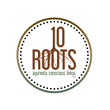
“If you really want to bring happiness and joy to a client, don’t try to discuss their problems intellectually, but instead give an oil massage and all their problems will simply dissolve.”
~ Acharya Charaka, father of Ayurvedic medicine[1]
Ayurveda has enjoyed a longtime love affair with oil. So it’s no coincidence that the Sanskrit word for oil, sneha, also means love. Snehana means the application of oil, which is performed externally on the skin through therapeutic treatments, or internally through consuming oil orally.
Ayurveda teaches that oil lubricates our bodies and keeps us healthy and flexible, especially as we age and move into the Vata stage of life. Because Vata is composed of air and space, which is rough, dry, mobile, subtle and cold, as we grow older we develop wrinkles, dry skin and hair, tight, achy joints, general coldness and brittle bones. The best way to counteract this aging process and pacify Vata is to use opposing qualities in your daily life like those in oil: heavy, smooth, slow, unctuous and warm. If you bend a dry stick, it is sure to crack, whereas a moist stick will simply bend. Snehana is an effective way to maintain flexibility for as long as possible and help to avoid muscular and skeletal injuries.
Common oils used in snehana therapy include ghee, bone marrow, animal fat and plant sources like vegetable oils. Often infused with medicinal herbs, these penetrating oils drive the herbs deep into the tissues to produce profound healing. Snehana can be a preparatory therapy for Panchakarma, the five cleansing procedures to remove toxins from the body (therapeutic vomiting, purgation, enema, nasal irrigation and bloodletting). Both internal and external snehana before Panchakarma serves to loosen and detach toxins from the tissues and bring them back into the gastrointestinal tract where they can be eliminated. (Panchakarma should only be administered by an experienced Ayurvedic doctor or practitioner.)
Snehana can also be used as a stand-alone therapy in Ayurveda, and in itself offers many healing benefits. Various snehana therapies can be done at home. Others can be administered by an Ayurvedic practitioner or doctor and are well worth seeking out. Below are several ways to get your daily dose of sneha so that you can experience pure love on the cellular level and bring your mind, body and soul back into balance.
- Daily Self-Oil Massage (Abhyanga): Massaging your body regularly with classically formulated herbal oils, like Maha Narayana Oil, will soften and nourish the skin, soothe tight muscles and joints, improve circulation, digestion, sleep, mood, concentration and energy, reduce stress and build immunity! Before you shower, warm the oil on the stove and gently massage your body, using long strokes on the long bone and circular strokes on the joints. This is one of the best ways to give yourself a daily dose of self-love.
- Nasya (nasal) Cleansing: Use nasya drops like Anu Oil regularly to strengthen your immunity and keep your nose, eyes, ears, and throat free of congestion. Also, as the nasal cavity is the only entryway into the brain, these drops have the added benefit of deepening your consciousness and promoting clarity of thought and memory.
- Oil Pulling: Swish a spoonful of oil (organic coconut oil and sesame oil are good choices) in your mouth before brushing your teeth daily for optimum oral health, as well as many other health benefits, including improved digestion, complexion, kidney and liver function and healthy weight loss.
- Warm Water with Oil: You may have already heard that drinking a warm cup of water right after waking up can significantly improve your digestion. If your bowel movements are still sluggish or infrequent, try adding a teaspoon of sesame oil to your cup.
- Ghee, a form of clarified butter, offers amazing health benefits, including improved digestion, immune function, energy and moods. Ghee has long been used in Ayurveda as a carrier to transport the healing properties of medicinal herbs and spices into the tissues. Use ghee in place of butter in your cooking.
When we allow ourselves to succumb to the pure bliss of anointing ourselves with oil, we experience self-love at the deepest levels. Oil penetrates into the tissues that have become rigid and hardened over time, in the same way that our thoughts and emotions can stagnate and become inflexible, hindering us from realizing our own healing capacities. Give yourself the gift of snehana and let the healing begin!
When to Avoid Snehana
Despite its many healing benefits, those who are very weak or suffer from high fevers, severe indigestion, vomiting, diarrhea, obesity or anorexia should avoid snehana. It is always advisable to consult an experienced Ayurvedic professional before starting any new treatment.
With you in healing,
[1] Lad, Dr. Vasant, Textbook of Ayurveda, Vol. 3, The Ayurvedic Press, 2012, p. 166

